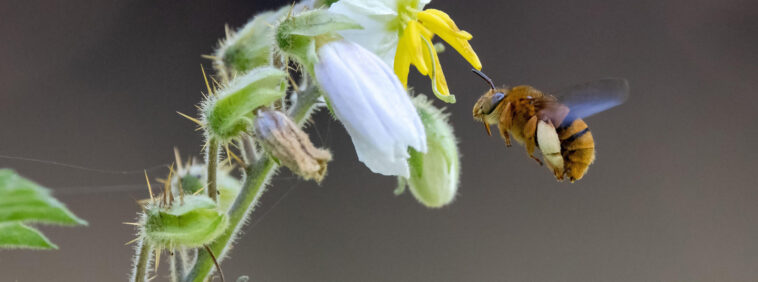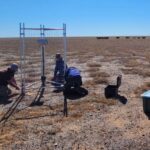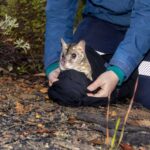Australia is home to a fascinating diversity of native bees, with over 1,700 species buzzing across the landscape. These small yet mighty pollinators play an essential role in maintaining the health of Australian ecosystems, supporting the growth of native plants, and in turn, the survival of countless animal species.
Unlike the familiar European honeybee, Australian native bees come in a stunning array of colours, sizes, and behaviours that make them both remarkable to observe and invaluable to their surroundings.
Bees not only contribute to natural habitats but also enhance agricultural landscapes by pollinating native plants and crops, supporting biodiversity, and even boosting yields of some fruiting plants.
Denis Crawford / Alamy Stock Photo
Buzzing with unique adaptations
From the tiny, stingless bees (Tetragonula and Austroplebeia sp.) which thrive in tropical rainforests, to bold Blue-banded Bees (Amegilla sp.) which vibrate flowers to release pollen, each species brings a unique adaptation to the diverse Australian environment.
They can be furry all over like the Teddy Bear Bee (Amegilla (Asaropoda) or shiny and smooth with limited fur. They come in a startling range of colours: black, red, green, yellow – even with blue polka dots – like the Thyreus sp. of Cuckoo Bees. Some, like Dawson’s Burrowing Bee (Amegilla dawsoni) nest underground in arid mud flats, only emerging in late winter or early spring, while others make nests in soft clay or tree forks.
Some are solitary, while others, like the 11 species of stingless bees, live in large nests inside hollow trees. These nests have a queen, workers and males, similar to the social structure of European honeybees. However, stingless bees are tiny and black, just 3 to 4 millimetres long.
The largest species, aptly named Great Carpenter Bee (Xylocopa), known for cutting nest burrows in soft timber such as dead limbs of a mango tree, grows up to 24 millimetres in length. In comparison, Australia’s smallest bees, the minute Euryglossina (Quasihesma) clypearis from Cape York, Queensland, have males that are just 1.8 millimetres long.
Sadly, native bees face mounting challenges, including habitat loss, climate change, and competition with introduced species. Understanding and protecting these vital pollinators is key to ensuring a balanced ecosystem and resilient biodiversity across Australia.

Wattlebird / Alamy Stock Photo
Learn about some of the species protected on Australian Wildlife Conservancy (AWC) sanctuaries and partnership areas below.




GIPHY App Key not set. Please check settings